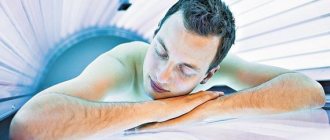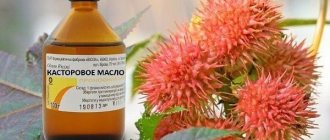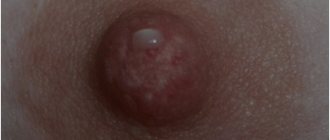September 30, 2021
The famous dermatologist, MD Thomas Fitzpatrick, who worked on methods for treating psoriasis, developed a classification of human phototypes in 1975. Subsequently, this classification formed the basis for assessing the risk of skin cancer.
The Fitzpatrick scale is actively used in modern dermatology. Phototyping takes into account and estimates risks in points depending on appearance, skin sensitivity to sunlight and its ability to tan. How to determine your phototype and choose the right sunscreen, especially if you are planning a vacation in hot countries?
Determine your phototype using the test
External features
(from 0 to 16 points)
Skin color and the presence of freckles are examined on untanned areas. Hair color means natural, before graying occurs - if you are an elderly person.
| Points | 0 | 1 | 2 | 3 | 4 |
| Eyes | Bright blue, bright green, light gray | Blue, green, gray | Dark blue, dark green, light brown (walnut color) | Brown | Black |
| Hair | Redheads | Blonde, light brown | Chestnut | Brown | Black |
| Leather | Pink | Light | Dark | Brown | Black |
| Freckles | A lot of | Moderate amount | Few | Some | No |
UV sensitivity
(from 0 to 16 points)
| Points | 0 | 1 | 2 | 3 | 4 |
| Effects of prolonged sun exposure | Severe burns, blisters, peeling | Moderate burns, blisters, peeling | Sometimes burns followed by peeling | Burns are rare | No |
| Tanning after sun exposure | Never | Rarely | Sometimes | Often | Always |
| Tan intensity | No | Easy | Average | Dark | Black |
| Sensitivity of facial skin to ultraviolet radiation | Very strong | Strong | Average | Weak | No |
Intentional exposure (sunbathing habit)
(from 0 to 8 points)
| Points | 0 | 1 | 2 | 3 | 4 |
| Frequency of going to the solarium/beach for tanning | Never | Rarely | Sometimes | Often | Regularly |
| When was the last time you sunbathed? | more than 3 months ago | 2-3 months ago | 1-2 months ago | Last week | Yesterday |
Add up the resulting points. You should get a number from 0 to 40.
How to choose the right sanitary protectors and tanning products for different skin phototypes
The most important point in the fight against skin diseases and photoaging is suitable sun care. The principle of its use is simple: in the first days of the sunny season, products with a high protection rating are used, and then, when the skin is lightly tanned, you can safely switch to products with a low SPF rating. This strategy will protect you from burns and therefore significantly reduce your risk of melanoma.
- First phototype
For protection: classic milk Ambre Solaire SPF 50+ with shea butter for face and body. Ideal for photosensitive skin. Moisturizes and blocks the effects of UVA and UVB rays.
35+ points
Skin type VI (“African”)
Dark brown or black leather. The sixth phototype is characteristic of people from the African continent and the aborigines of Australia. Natural skin protection against UV exposure can be considered ideal, since it allows you to constantly be exposed to direct rays of the sun without any damage.
If you score 13 points or less, you have fragile beauty and are at risk for developing melanoma. Things are a little better for the “European dark” (III) type. It is this phototype that predominates in Russia from Kaliningrad to Kamchatka. The incidence of skin cancer, scientifically called melanoma, has doubled in Russia over the past decades.
The incidence of skin cancer among representatives of phototypes IV, V and VI has not changed for decades. Among the indigenous population of Russia, these phototypes are rare. The number of mulattoes does not exceed 0.5% of the population of the Russian Federation, but we will also voice recommendations for them.
Determining your phototype according to Fitzpatrick
Most people classify their skin according to the following criteria: normal, dry, oily, combination and sensitive. Normal skin is firm, elastic, radiant and optimally hydrated. Dry skin suffers from lack of moisture. Oily skin produces excessive amounts of sebum. Mixed skin has an excess of fat only in the T-zone: the forehead, nose and chin. Sensitive skin overreacts to certain irritants.
However, not everyone knows what phototype his skin belongs to. And this must be taken into account in order to determine the sensitivity of the skin to ultraviolet radiation, because the sun can leave indelible marks on our skin.
Thomas Fitzpatrick - dermatologist, MD - in 1975, developed a classification of phototypes, which is actively used by modern dermatologists. Based on how the sun affects the skin, he identified 6 different types.
I – Celtic. Always burns easily and never tans. People of this type have milky white skin with freckles. Red or very blond hair. Eyes blue or green.
II – European light-skinned. Always burns easily and tans minimally. Light skin, few freckles. Hair is brown, light brown. Eyes are green, blue or gray.
III – European black. Burns moderately, tans gradually. The skin is light brown, without freckles. The hair is brown. Eyes gray or brown.
IV – Mediterranean. Burns minimally, always tans well. The skin is dark. The eyes are brown. Hair is dark.
V – Indonesian. It burns very rarely, tans well. The skin is very dark. The eyes are dark brown. Black hair.
VI – African American. Never burns, most pigmented. The skin is very dark. The eyes are black-brown. Black hair.
How to protect your skin from the sun?
Owners of phototype I have skin that is most sensitive to solar radiation. As they age, their risk of developing skin cancer increases. Therefore you need to be very careful. Use a sunscreen with a minimum SPF of SPF 50 for the body and face. Avoid direct sunlight during the day from 11 a.m. to 4 p.m. Wear a wide-brimmed hat to protect your face from the sun.
Type II skin has a higher protection index, but is also highly susceptible to risk. You should not be in direct sunlight at lunchtime. As a rule, when tanning, this type of person's skin first burns and then slowly acquires a darker shade. The minimum SPF value for the face is 50.
Skin of phototype III causes less concern. During the daytime, you can stay under the sun for no more than half an hour if your body and face are lubricated with cream with SPF 30.
Type IV skin tolerates ultraviolet radiation more easily, tans quickly and maintains a tan for a long time. But it also needs to be protected. Choose a cream with sun protection factor 30. The sun will not cause any special problems for Indonesian and African phototypes. But it is also necessary to use this type of sunscreen, and after sunbathing, moisturizer.
Skin phototypes and skin aging
For all of them, exposure to sunlight is a damaging factor. Under its influence, the structure and elasticity of the dermis are lost, facial wrinkles are formed, pigment spots appear, and uneven coloring of the epidermis. Excessive sun exposure is a risk factor for melanoma.
Phototypes 1, 2 are characterized by a very small amount of melanin pigment in the cells. Melanin absorbs sun rays, protecting the skin. Therefore, people with these types should avoid the sun and use high SPF sunscreens. These types are characterized by the appearance of freckles and are more susceptible to premature photoaging.
Phototypes 3 and 4 have more melanin in their cells, evenly distributed. Therefore, freckles are not typical for them. Photoaging processes for these types include expression lines (forming later than in people with lighter skin), lentigines, and the formation of melasma (a type of age spots). People of this type can easily sunbathe without overexposing themselves to the sun, always using sunscreen.
Skin phototypes 5 and 6 not only contain a lot of melanin, their dermis is thicker and denser than that of fair-skinned people, and it contains more moisture. As a result, expression lines appear later. As they age, such people are prone to developing melasma. These types are characterized by a higher rate of epidermal renewal, so such people need good regular cleansing of the skin.
Application in cosmetology
In addition to the features of care and sun protection, phototypes are taken into account when using a variety of light cosmetology techniques, primarily laser. The action of pulsed light with a certain wavelength, that is, a laser, is used by cosmetologists for cleansing, lifting, and hair removal. Before using such techniques, the cosmetologist must take into account the skin phototype.
Incorrectly selected laser beam power can lead to burns.
III phototype
Titles:
Central European, dark European, mixed, dark-skinned European.
Leather:
slightly dark, with an olive tint or ivory color, practically without freckles.
Hair:
shades of chestnut, dark brown, rarely black.
Eyes:
gray, brown.
Reaction to ultraviolet light:
The tan applies easily and quickly, producing a moderately dark shade. However, burns may occur with excessive initial exposure to the sun (more than half an hour).
Recommendations:
rational insolation regime, especially with a sharp movement to southern latitudes.
Welcome to Lasernur!
The studio has a promotion - 50% discount for new clients. When conducting a course of procedures, individual conditions are provided. You can find out about other promotions and special offers here.
Results Before and After Laser Hair Removal
Sign up via direct message or phone number:
+7 Address: Yubileiny microdistrict 3/6
Mall Molodezhny 2nd floor,
office 5
THIS IS INTERESTING:
Your question: Why is the skin on my armpits dark?
Our partners: Frangipani massage salon in Novy Urengoy
II phototype
Titles:
Nordic, Aryan, Germanic, Eastern European, fair-skinned European, fair-skinned European.
Leather:
light. Freckles may occur, but are less pronounced than in persons with the first skin phototype. The phototype is also characteristic of Europeans.
Hair:
various shades of light chestnut or light brown.
Eyes:
blue, gray, green, less often light brown.
Reaction to ultraviolet light:
quite high photosensitivity. Burns occur easily (after about 20 minutes of sun exposure). The tan does not apply well and is unstable.
Recommendations:
It is possible to obtain a golden skin tone with rare and short sunbathing (no more than 10 minutes) during relatively “safe hours” (before 11:00 and after 16:00). It is advisable to use photoprotective products with an SPF value of about 30.
Determination of skin phototypes
In everyday life, this is necessary primarily for the correct choice of sunscreens.
How to find out your skin phototype? To do this, you can use the tables below. They take into account 3 main factors:
- genetically determined external signs;
- sensitivity to sun exposure;
- features of tanning.
You need to determine the appropriate characteristics from the tables, write down and add up the points corresponding to them, and then compare the result with the final table.
External signs of skin phototypes:
Sun sensitivity:
Tanning Features:
Final table of skin phototypes:
What is the Fitzpatrick scale
The Fitzpatrick test is a scientific classification of skin phototypes, which is aimed at determining acceptable levels of ultraviolet exposure.
The scale was developed in 1975. She classifies all types of skin phototypes depending on the amount of pigment, as well as its reaction to sunlight. Such information is useful in determining the risk of sunburn and skin cancer.
After determining your skin phototype and individual risk level, you can choose the right sunscreen and find out the permissible duration of sun exposure.
IV phototype
Titles:
Mediterranean, South European.
Leather:
dark, olive, no freckles. The phototype is typical for residents of Latin America, Asia, the Caucasus and the Mediterranean.
Hair:
dark chestnut or black.
Eyes:
brown, dark brown or black.
Reaction to ultraviolet light:
the skin has high natural protection (about 40 minutes). A pronounced and lasting tan appears quickly. Sunburn is very rare, but prolonged exposure to high doses of ultraviolet radiation can cause photoaging of the skin.
Recommendations:
the use of light protective agents (SPF from 8 to 20) to prevent solar aging.
Phototypes: cheat sheet
| Skin type | Phototype | Ethnic scale |
| I | Prone to burns when tanning, does not acquire a bronze tint, and does not tan at all | Irish, Scots |
| II | Characterized by the occurrence of sunburn and the difficulty of obtaining a tan. Owners of this type of skin | central Europeans |
| III | It may succumb to the negative effects of the sun and become covered in blisters, but it is extremely rare. As a rule, the skin easily gets a golden tan, and after a while it becomes dark. | Italians, Portuguese |
| IV | Virtually no burns, quickly acquires an even, attractive tan | Natural olive or yellow skin tone (Hispanics, fair Hispanics) |
| V | It is distinguished by its natural dark complexion. Has a brown tint. Suitable for quick and easy tanning | Natural dark, brown skin (East Indian) |
| VI | Natural black leather | Naturally black leather |
Having correctly determined your phototype, you can more intelligently approach the choice of decorative cosmetics, as well as care products and protective products that protect the skin from burns. Also, having information about your phototype, you can avoid mistakes that arise when carrying out a number of procedures (laser rejuvenation, cosmetic procedures, etc.).
A professional cosmetologist at the Abrielle Aesthetic Surgery Clinic can choose the right skin care for your phototype. To schedule a consultation, call the clinic and 8(921)99-22-335.
Features of the use of chemical peels for various skin phototypes according to Fitzpatrick
An alternative to laser and IPL therapy in solving pigmentation problems are chemical peels. For example, Dr. Hextall uses The Perfect Peel, a medium peel that contains glutathione, kojic acid, TCA, retinoic acid, salicylic acid, phenol, vitamins and minerals.
For patients with Fitzpatrick skin phototypes IV–VI, there is an increased risk of post-inflammatory hyperpigmentation after peelings, therefore, as part of preparing the skin for the procedure, a tyrosinase inhibitor is used, which blocks melanin production.
Dr. Rimmer offers his patients chemical peels, most often The Perfect Peel or pHformula. Some peels can be used without prior preparation of the skin, however, for dark-skinned patients, the doctor always prescribes a two-week course of pre-peel preparation in order to reduce the risk of pigmentation disorders.
V phototype
Titles:
Middle Eastern, Indonesian, Asian.
Leather:
dark, dark brown, possible yellowish tint. No freckles. The phototype is found mainly in residents of Southeast Asia and many Latin American countries.
Hair:
dark brown or black.
Eyes:
dark brown or black.
Reaction to ultraviolet radiation:
a high degree of natural skin protection; sunburn is extremely rare (this only happens with very intense and prolonged exposure to ultraviolet radiation). The acquired tan is almost invisible against the background of natural pigmentation.
Recommendations:
minimal protection may be necessary when exposed to direct sunlight after a long break (use products with SPF of about 10).
Practical significance of phototypes
It is advisable for every person to find out their skin phototype, since this has a direct bearing not only on external beauty, but also on health. For example, it is considered statistically significant that the development of certain types of skin tumors is directly related to the level of ultraviolet radiation absorbed by the dermis. Among them is the most malignant tumor – melanoma. These facts have been confirmed through scientific and medical experiments. Knowing your skin phototype allows you to:
- determine a safe regime for staying in the sun or in a solarium, which will result in an even and lasting tan and no burns;
- choose the right products with a sufficient level of sun protection index SPF (Sun Protection Factor);
- undergo cosmetic procedures associated with dosed damage to the skin (chemical or laser peeling) without complications;
- avoid skin photoaging;
- significantly reduce the risk of oncodermatological diseases.









